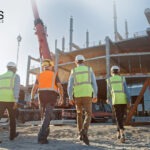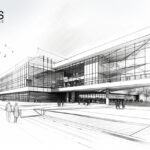In the world of construction, two major branches stand out: residential construction and commercial construction. Each plays a vital role in shaping the built environment, yet they divide significantly in their purpose, design considerations, and regulatory requirements. Each plays an important role in shaping the built environment, but their purposes, design considerations, and regulatory requirements differ significantly. Whether you’re a construction professional, or an entrepreneur planning to invest in commercial things, understanding the distinctions between these two dimensions is essential to make informed decisions and handle the construction landscape effectively.
Purpose of Construction:
The major purpose of residential construction is to build properties for individuals or families to live in. This includes small apartments, single-family homes, and other residential places. Commercial construction focuses on building structures planned for business, retail, or industrial purposes. These include office buildings, warehouses, restaurants, hotels, shopping centers, warehouses and any other commercial facilities.
Design and Architectural Features:
Residential projects often highlight aesthetics and personalized design to create functional and pleasant spaces. Homeowners’ preferences and lifestyle needs play a significant role in the design process, making each residential property unique. Commercial projects prioritize functionality, space efficiency, and adherence to specific business requirements. While some commercial properties may have unique architectural design and features, the design is primarily driven by the intended use and efficiency of the space.
Codes and Regulations:
Residential construction is subject to building codes and regulations that prioritize on accessibility, safety, and energy efficiency for residential space. Commercial projects must adhere to a more complex set of building codes and regulations, often involving stringent safety standards, fire suppression systems accessibility for people with disabilities, and compliance with specific industry regulations.
Construction Techniques and Materials:
Residential projects generally use standard construction materials like wood, cement and bricks. Construction techniques are frequently adapted towards traditional building methods suitable for housing. Commercial buildings may incorporate a broader range of construction materials, such as steel, glass and reinforced concrete. The construction techniques may vary significantly depending on the complexity and purpose of the commercial structure.
Scale and Cost:
Residential projects are typically on a smaller scale than commercial projects. They have a smaller budget and shorter construction timelines. Commercial projects are larger and more complicated, with larger budgets and longer construction timelines. These projects frequently require careful planning and coordination in order to meet specific business requirements.
Construction Contracts:
Residential projects commonly involve contracts between homeowners and general contractors or individual trade’s people for smaller projects. Commercial projects typically engage more large contracts with developers, general contractors, subcontractors, and other stakeholders, given the larger scope and complexity of these projects.
Project Timeline:
Residential construction projects generally have shorter construction timelines compared to commercial construction projects. The construction of a single-family home or a small housing complex can be completed in a few months. Commercial projects lead to have longer construction timelines due to their larger scale and complexity. Constructing a commercial building can take anywhere from several months to several years, depending on the size and scope of the project.
LAADS Contracting LLC is the Best Construction Company in Dubai, UAE, use the latest technology and sustainable processes, setting the standard for excellence, dedication, and innovation in the construction industry. With a remarkable portfolio of successful projects and a commitment to delivering high-quality results, we have earned the trust and admiration of clients and stakeholders alike.






